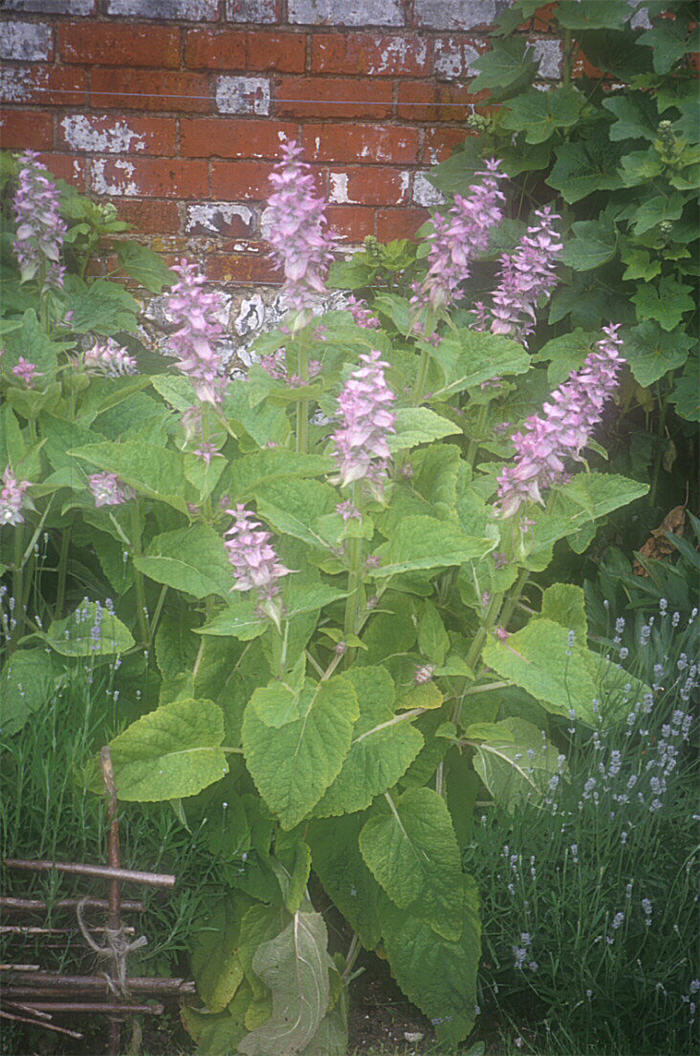| Botanical Name: Salvia sclarea | |
| Common Name: Clary Sage |

-
Anatomy
-
Culture
-
Design
Plant Type
Perennial, Annual, Biennial, Herb
Height Range
1-3'
Flower Color
Blue, Pink, Violet, White
Flower Season
Summer
Leaf Color
Green
Bark Color
n/a
Fruit Color
n/a
Fruit Season
n/a
Sun
Full
Water
Low, Medium
Growth Rate
Moderate
Soil Type
Sandy, Loam, Rocky
Soil Condition
Average, Poor, Well-drained
Soil pH
Neutral
Adverse Factors
Invasive
Design Styles
English Cottage, Mediterranean, Ranch
Accenting Features
n/a
Seasonal Interest
Summer
Location Uses
Perennial Border
Special Uses
n/a
Attracts Wildlife
Hummingbirds, Butterflies
Information by: Stephanie Duer
Photographer:
Photographer:
-
Description
-
Notes
Clary sage is an erect, hairy,branched biennial or perennial herb with large, aromatic, light green, ovate leaves about 9 inches long.The flowers are whorls of bicolored cream and lilac, to pink or blue, with conspicuous lilac bracts that bloom in spring and summer. It can grow up to 3 feet high and to 2 feet wide. The leaves are very aromatic, described as balsam-like. Useful in potpourris, sachets, or for cooking.
Grow in average to poor well drained soil. Fertilizing can result in larger, though less aromatic foliage. It does reseed, and so deadhead if you want to control that sort of thing. Hummingbirds and butterflies enjoy the flowers. In our climate, it is not dependably perennial, though with its reseeding ways, it may always be present in your garden.